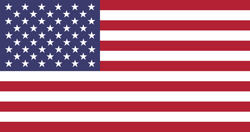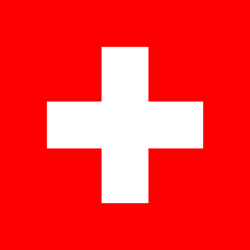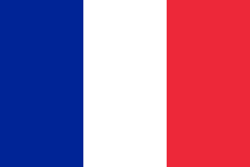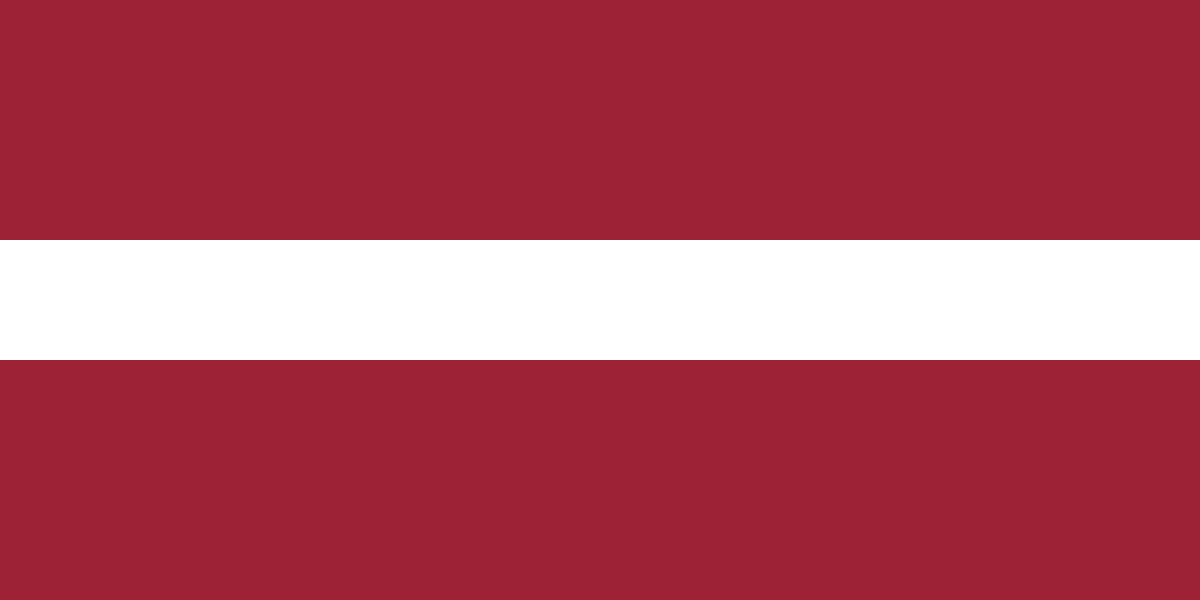Countries
IPPOG
IPPOG Forum Members
Italy

Intro
The Italian research agency dedicated to the study of the fundamental constituents of matter and the laws that govern them, under the supervision of the Ministry of Education, Universities and Research (MIUR), is the Italian National Institute for Nuclear Physics (INFN). It conducts theoretical and experimental research in the fields of subnuclear, nuclear and astroparticle physics. Groups from the Universities of Rome, Padua, Turin, and Milan founded the INFN on 8thAugust 1951 to uphold and develop the scientific tradition established during the 1930s by Enrico Fermi and his school, with their theoretical and experimental research in nuclear physics. In the latter half of the 1950s, INFN designed and built the first Italian accelerator, the electron synchrotron developed in Frascati, where its first national laboratory was set up. During the same period, INFN began to participate in research into the construction and use of ever-more powerful accelerators being conducted by CERN, in Geneva. Today INFN employs some 6000 scientists whose work is recognized internationally not only for their contribution to various European laboratories, but also to numerous research centres worldwide. All of INFN’s research activities are undertaken within a framework of international competition, in close collaboration with Italian universities on the basis of solid academic partnerships spanning decades.
As an Institution working on cutting-edge scientific issues, INFN has a significant impact on the progress of knowledge, on technological development and on the economy of the country. Aware of this role, and of the fact that it is the duty of a public body to share its activities and the results that derive from them with society, the Institute is increasingly committed to outreach and public engagement. The Institute plays an important role in the communication of physics at the national and local level, by promoting, designing and implementing initiatives for the dissemination and promotion of scientific culture, both for the general public and for specific targets. In addition to traditional initiatives, it studies and experiments new forms of communication, emphasizing the fundamental relationship between physics and other areas of knowledge. The Institute also contributes a lot to the training of high school students through scholarships, internships, teacher training and school-work projects.
Details
In Italia IPPOG è rappresentato dall’Istituto Nazionale di Fisica Nucleare (INFN). L’INFN è l’ente pubblico nazionale di ricerca, vigilato dal Ministero dell’Istruzione, dell’Università e della Ricerca (MIUR), dedicato allo studio dei costituenti fondamentali della materia e delle leggi che li governano. Svolge attività di ricerca, teorica e sperimentale, nei campi della fisica subnucleare, nucleare e astroparticellare. Le attività di ricerca dell’INFN si svolgono tutte in un ambito di competizione internazionale e in stretta collaborazione con il mondo universitario italiano, sulla base di consolidati e pluridecennali rapporti. La ricerca fondamentale in questi settori richiede l’uso di tecnologie e strumenti di ricerca d’avanguardia, che l’INFN sviluppa sia nei propri laboratori sia in collaborazione con il mondo dell’industria.
L’INFN è stato istituito l’8 agosto 1951 da gruppi delle Università di Roma, Padova, Torino e Milano al fine di proseguire e sviluppare la tradizione scientifica iniziata negli anni ‘30 con le ricerche teoriche e sperimentali di fisica nucleare di Enrico Fermi e della sua scuola. Nella seconda metà degli anni ’50, l’INFN ha progettato e costruito il primo acceleratore italiano, l’elettrosincrotrone realizzato a Frascati dove è nato anche il primo Laboratorio Nazionale dell’Istituto. Nello stesso periodo è iniziata la partecipazione dell’INFN alle attività di ricerca del CERN, il Centro europeo di ricerche nucleari di Ginevra, per la costruzione e l’utilizzo di macchine acceleratrici sempre più potenti. Oggi l’ente conta circa 6000 scienziati il cui contributo è riconosciuto internazionalmente non solo nei vari laboratori europei, ma in numerosi centri di ricerca mondiali.
JOINED: 2007
CURRENT STATUS: MEMBER
JOINED: 2017
Representative
Sabine Hemmer
IPPOG
Former Staff
Master Student
Jana Fiserova
Jana has joined IPPOG as a Coordination Assistant in October 2023 via CERN Administrative Student Programme. Her main duty is to contribute to the new collaboration web site dedicated to IPPOG International Master Classes. In parallel, she participates in the preparation of the fall collaboration meeting at CERN.
IPPOG
IPPOG Forum Members
LHCb Collaboration
Intro
The LHCb (Large Hadron Collider beauty) experiment at CERN, located at Point 8 of the LHC near Geneva, focuses on studying b-quarks to understand the differences between matter and antimatter. It started operating in 2010 and investigates CP violation and rare particle decays, providing insights into why the universe is dominated by matter. LHCb has made significant discoveries, including exotic particles like tetraquarks and pentaquarks, and has observed CP violation in baryons. Its findings test the Standard Model and explore potential new physics.
Details
L'expérience LHCb (Large Hadron Collider beauty) au CERN, située au Point 8 du LHC près de Genève, se concentre sur l'étude des quarks b afin de comprendre les différences entre la matière et l'antimatière. Elle a commencé à fonctionner en 2010 et examine la violation de CP ainsi que les désintégrations rares de particules, fournissant des informations sur la prédominance de la matière dans l'univers. LHCb a réalisé des découvertes importantes, notamment des particules exotiques comme les tétraquarks et les pentaquarks, et a observé la violation de CP dans les baryons. Ses résultats testent le Modèle Standard et explorent de nouvelles physiques potentielles.
Representative
Bolek Pietrzyk
IPPOG
IPPOG Forum Members
LHCb Collaboration
Intro
The LHCb (Large Hadron Collider beauty) experiment at CERN, located at Point 8 of the LHC near Geneva, focuses on studying b-quarks to understand the differences between matter and antimatter. It started operating in 2010 and investigates CP violation and rare particle decays, providing insights into why the universe is dominated by matter. LHCb has made significant discoveries, including exotic particles like tetraquarks and pentaquarks, and has observed CP violation in baryons. Its findings test the Standard Model and explore potential new physics.
Details
L'expérience LHCb (Large Hadron Collider beauty) au CERN, située au Point 8 du LHC près de Genève, se concentre sur l'étude des quarks b afin de comprendre les différences entre la matière et l'antimatière. Elle a commencé à fonctionner en 2010 et examine la violation de CP ainsi que les désintégrations rares de particules, fournissant des informations sur la prédominance de la matière dans l'univers. LHCb a réalisé des découvertes importantes, notamment des particules exotiques comme les tétraquarks et les pentaquarks, et a observé la violation de CP dans les baryons. Ses résultats testent le Modèle Standard et explorent de nouvelles physiques potentielles.
Representative
Mark Richard James Williams
IPPOG
IPPOG Forum Members
United States of America

Intro
QuarkNet and Fermilab are the leading institutions for United States particle physics outreach.
Both institutions had an exciting 2020, transitioning quickly to virtual offerings and expanding particle physics education and outreach to new audiences.
In addition to offering remote workshops at centers across the US, QuarkNet offered a
Wednesday Webinar series for high school classrooms toward the end of the 2019–20 school year and a six-week Summer Session for teachers which introduced participants to the history and development of the Standard Model. For the 2020–21 academic year, we have inaugurated QuarkNet Educational Discussions, which are an opportunity for teachers to come together every two weeks to share ideas and learn from one another about teaching physics remotely. Many of Fermilab’s biggest programs went virtual in 2020 and attracted expanded audiences, including the annual STEM Career Expo, teacher training workshops, Saturday Morning Physics, Fermilab Arts and Lecture Series, classroom visits from Fermilab staff, Ask-a-Scientist, and even Mr. Freeze. Although nothing can ever replace the feeling of seeing big science up close, these virtual offerings are filling a gap until we can return to welcoming the public to in-person events.
Each summer the EPE Office offers a number of different workshops for K–12 teachers, each geared toward specific grade levels. On short notice, Fermilab sent kits across the country to teachers interested in participating, thus ensuring that the hands-on piece of the program was not lost. Now, Fermilab science will be taught in the virtual and in-person classrooms of 109 more teachers across the United States.
Saturday Morning Physics is a long-standing tradition at Fermilab. In September 2020 the program was relaunched as fully virtual for the present time. Featuring talks by Fermilab staff, virtual tours and plenty of time for questions, this program had its largest graduating class ever. For the public Fermilab was able to relaunch Ask-a-Scientist and our Summer Science Series as virtual programs. The events have been well-attended: 500 people have participated in the two series.
Details
Representative
Shane Wood
IPPOG
IPPOG Forum Members
Austria

Intro
Content to be provided
Details
JOINED: 2016
CURRENT STATUS: MEMBER
Content in local language to be provided
JOINED: 2016
CURRENT STATUS: MEMBER
Representative
Brigitte De Monte
IPPOG
IPPOG Forum Members
Switzerland

Intro
The Swiss Institute for Particle Physics (CHIPP) is an association according to Swiss law regrouping all the particle, astroparticle, and nuclear physicists holding a Master in physics and working for a Swiss institution, as well as the Swiss PhD nationals working at CERN.
Founded in 2003, CHIPP aims at strengthening in Switzerland three main pillars: Particle physics at the high-energy and intensity frontiers
astroparticle physics and neutrino physics.
This is achieved by promote public awareness on particle and astroparticle physics, helping towards a successful participation of Swiss groups in international projects and ensuring a proper Swiss representation in relevant national and international bodies.
Details
German
Das Schweizerische Institut für Teilchenphysik (CHIPP) ist die Dachorganisation der Schweizer Forschenden auf dem Gebiet der Teilchen-, Astroteilchen- und Kernphysik mit einem Master in Physik, die für eine Schweizer Institution arbeiten, sowie die Schweizer Doktoranden, die am CERN arbeiten, zusammengeschlossen sind.
CHIPP wurde 2003 gegründet und zielt darauf ab in der Schweiz die drei Forschungsgebiete Teilchenphysik, Astroteilchenphysik und Neutrinophysik zu stärken.
Dies wird erreicht durch die Förderung des öffentlichen Bewusstseins für die Teilchen- und Astroteilchenphysik, die Unterstützung der erfolgreichen Beteiligung von Schweizer Gruppen an internationalen Projekten und die Sicherstellung einer angemessenen Schweizer Vertretung in relevanten nationalen und internationalen Gremien.
French
L'Institut Suisse de Physique des Particules (CHIPP) réunit les chercheuses et chercheurs de la physique des particules, des astroparticules et de la physique nucléaire. Ces chercheurs doivent être titulaires d'un Master en physique et travailler pour une institution Suisse. Font partie de CHIPP aussi les doctorants suisses travaillant au CERN.
Fondé en 2003, le CHIPP vise à renforcer trois piliers principaux en Suisse: la physique des particules aux frontières des hautes énergies et des hautes intensités, la physique des astroparticules et la physique des neutrinos.
Cet objectif est atteint en sensibilisant le public à la physique des particules et des astroparticules, en contribuant à une participation de groupes suisses à des projets internationaux et en assurant une représentation suisse adéquate dans les organes nationaux et internationaux pertinents.
Italian
L'Istituto Svizzero di Fisica delle Particelle (CHIPP) riunisce i ricercatori di fisica delle particelle, dell'astrofisica e del nucleare che sono in possesso di un Master in fisica e che lavorano per un istituto Svizzero. Sono inclusi anche i cittadini svizzeri con dottorato che lavorano al CERN. Fondato nel 2003, CHIPP mira a rafforzare in Svizzera tre pilastri principali: fisica delle particelle alle frontiere delle alte energie e dell'intensità, astrofisica e fisica dei neutrini.
Questo obiettivo viene raggiunto promuovendo l’educazione del pubblico riguardo la fisica delle particelle e dell’astrofisica, favorendo una brillante partecipazione dei gruppi svizzeri in progetti internazionali e assicurando un'adeguata rappresentanza svizzera negli organismi nazionali e internazionali pertinenti.
JOINED: 2016
CURRENT STATUS: MEMBER
Representative
Barbora Bruant Gulejova
IPPOG
IPPOG Forum Members
France

Intro
In France, introducing young people and the general public to basic science (nuclear physics, physics of elementary particles, cosmology and astrophysics), the technological advances they require and their related applications (energy, health, etc.), is a key mission for the 25 CNRS/IN2P3 national research laboratories and platforms, and the CEA/IRFU. Our educational and outreach activities are carried out in close collaboration to teaching staff and take many forms: visit to laboratories, “Masterclass” discovery days, teacher-training courses, loans of cosmic-ray detectors for use in classrooms, teaching aids, exhibitions, websites, virtual visits, audiovisual productions, books, etc.
Our goal: to give people a taste for science and physics
Details
JOINED: 2016
CURRENT STATUS: MEMBER
LOCAL RESOURCES WEBSITE(S)
CNRS/IN2P3 Outreach and Communication Page
En France, la diffusion vers les jeunes (élèves ou étudiants) et le grand public de branches de la recherche fondamentale (physique nucléaire, physique des particules, cosmologie et astrophysique), des avancées technologiques qu’elles nécessitent et de leurs applications sociétales (dans le domaine de l’énergie, de la santé, etc.) est une mission clef des 25 laboratoires de recherche et plateformes nationaux du CNRS/IN2P3 et du CEA/IRFU. Nos activités pédagogiques et de vulgarisation se déroulent en partenariat avec les enseignants et prennent des formes très différentes : visites de laboratoire, journées de découverte « Masterclasses », formations d’enseignants, prêts de détecteurs pédagogiques de muons cosmiques utilisés en classe, supports d’enseignements, expositions, sites internet, visites virtuels, production de contenus audio-visuels, livres, etc.
Notre but : donner aux gens le goût de la science et de la physique
JOINED: 2016
CURRENT STATUS: MEMBER


